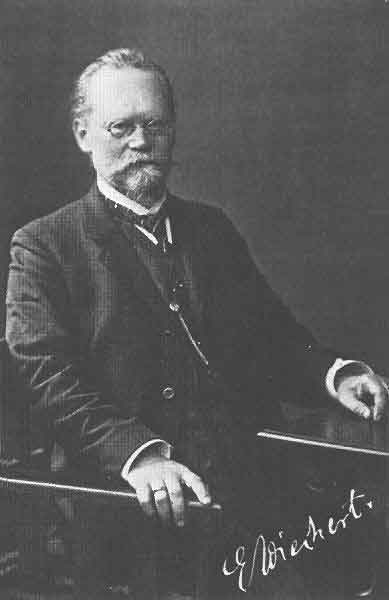.
Emil Johann Wiechert

Emil Wiechert
Emil Johann Wiechert (December 26, 1861 – March 19, 1928) was a German geophysicist.
Wiechert was born in Tilsit, Province of Prussia, the son of Johann and Emilie Wiechart. After his father died, Emilie moved to Königsberg so that Emil could study at the University of Königsberg. Due to economic difficulties he took longer than normal to complete his education, but he was awarded a Ph.D. in 1889.
The following year he became qualified to lecture in physics at a university-level in Germany. He became an assistant to Paul Volkmann at Georg-August-Universität in Göttingen, and during the next seven years performed research in physics. By 1897 he was named professor of geophysics. He became a full professor at the institution in 1905, and would remain there for the remainder of his career. He would be married to Helene Ziebarth, a lawyer's daughter, in 1908, but the couple did not have children.
During his career he made important contributions to the discovery of the electron, the physics of cathode rays, and Liénard-Wiechert Potentials. He was the first geophysicist to present a verifiable model of the Earth's interior as a series of shells. He wrote a number of scientific papers, including a pioneering work on how seismic waves propagate through the Earth. He also devised an improved seismograph and created the field of geological prospecting using small, artificially-created earthquakes.
Toward the end of his life he became increasingly deaf and would suffer from a number of ailments before finally passing away. He died in Göttingen.
Awards and honors
* Corresponding member of the Berlin Academy of Science, 1912.
* Wiechert crater on the Moon is named after him.
Links
* Some Aspects in Emil Wiechert´s Scientific Work
* Emil Wiechert (1861–1928): Esteemed seismologist, forgotten physicist
* Emil Wiechert with his seismograph
Retrieved from "http://en.wikipedia.org/"
All text is available under the terms of the GNU Free Documentation License

